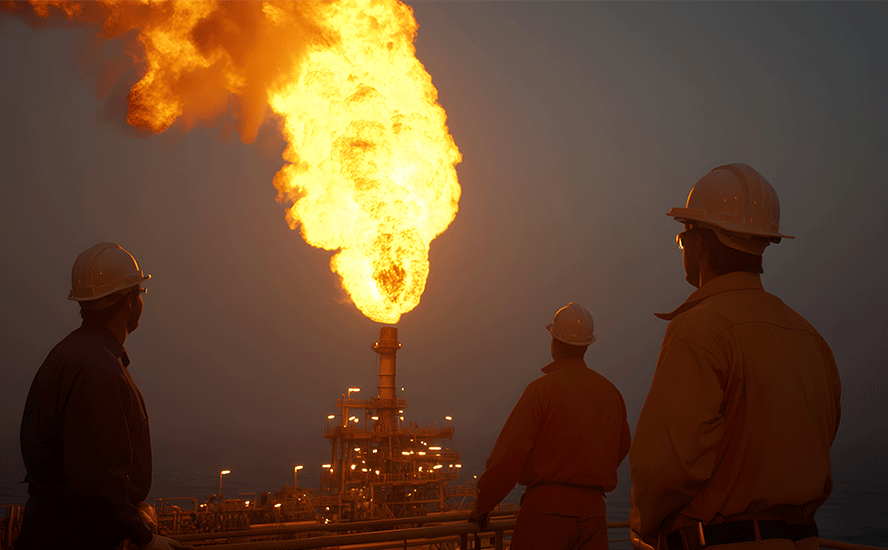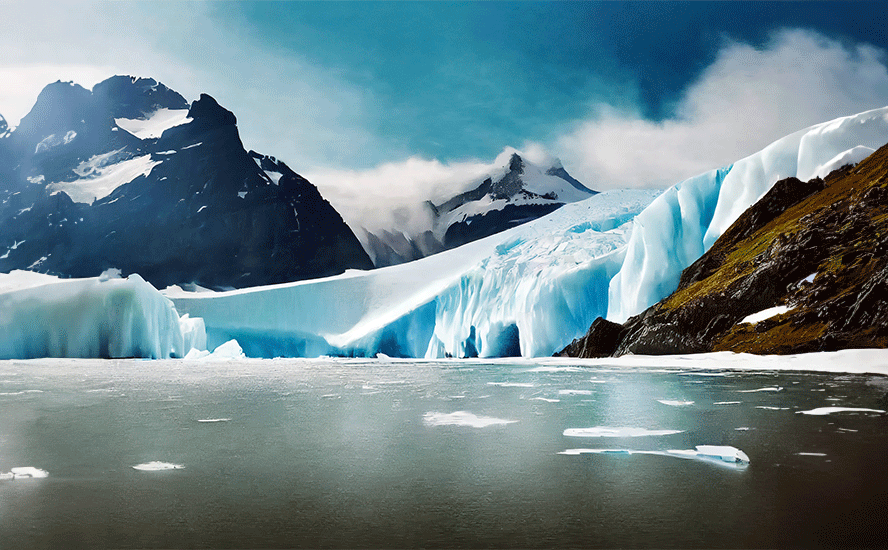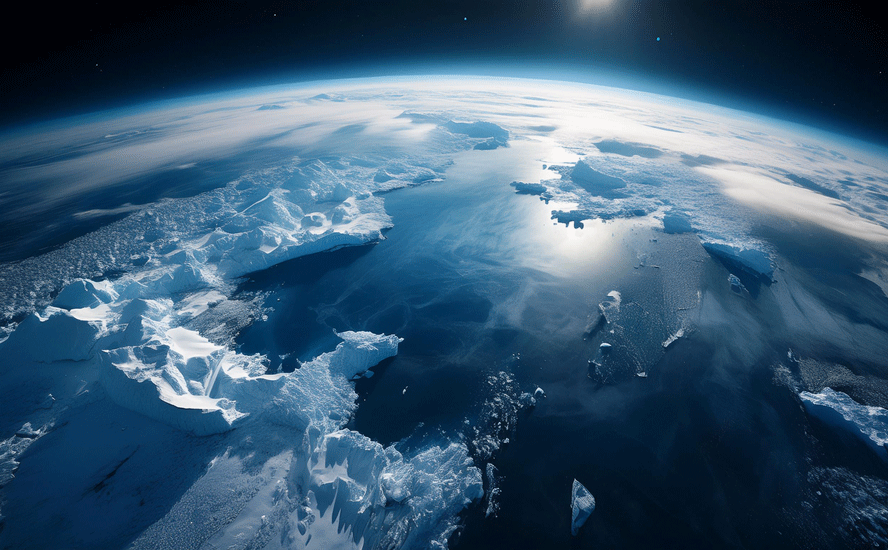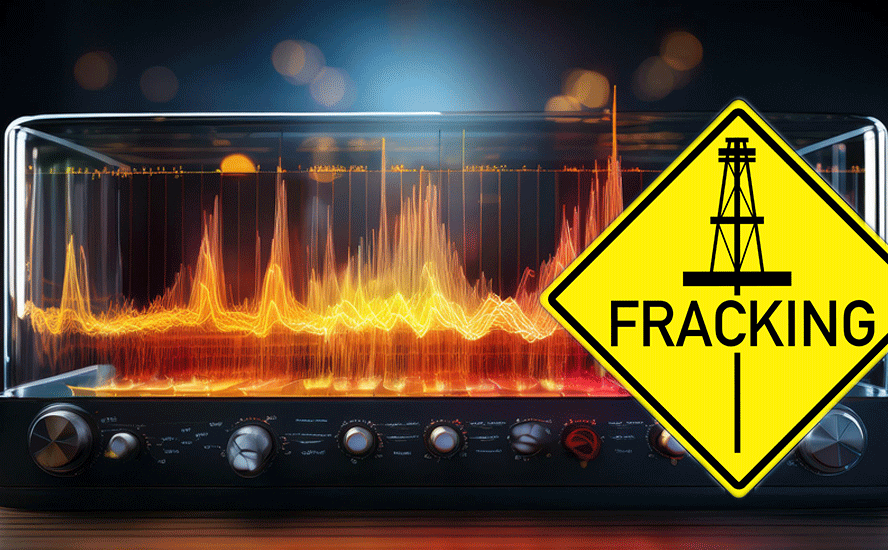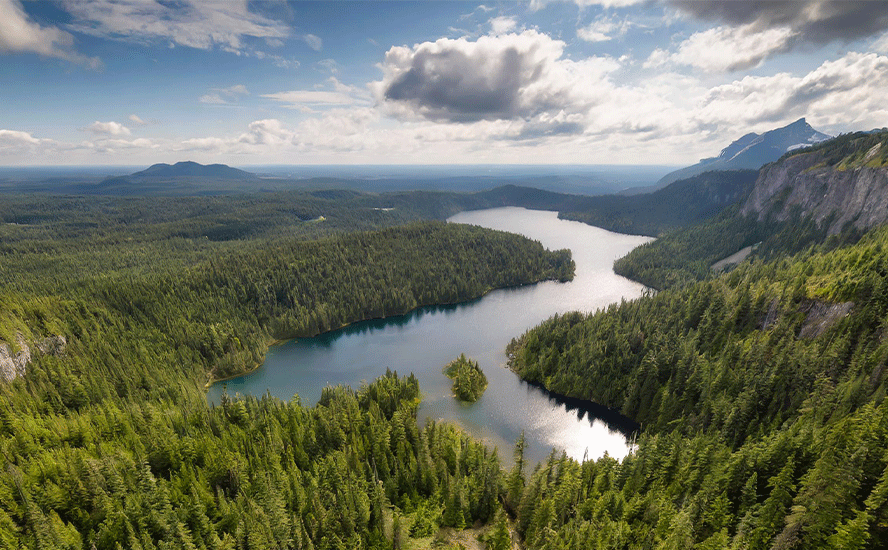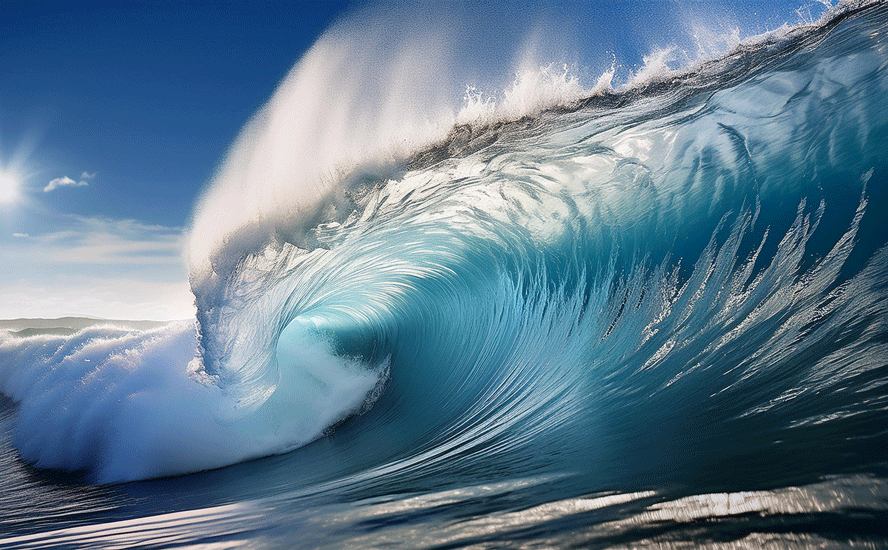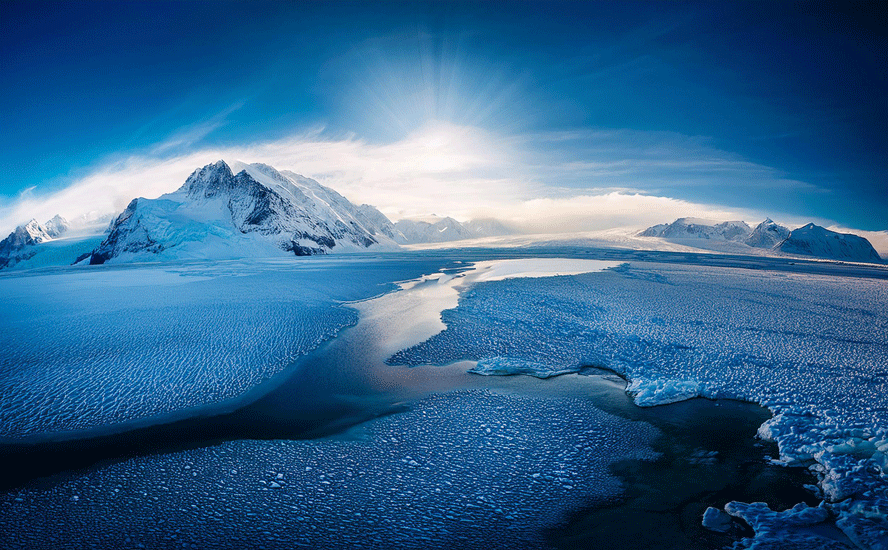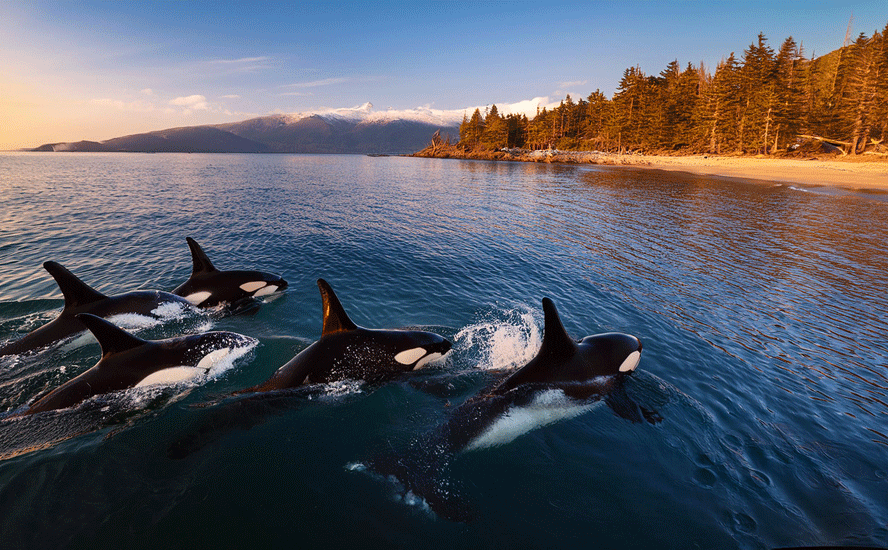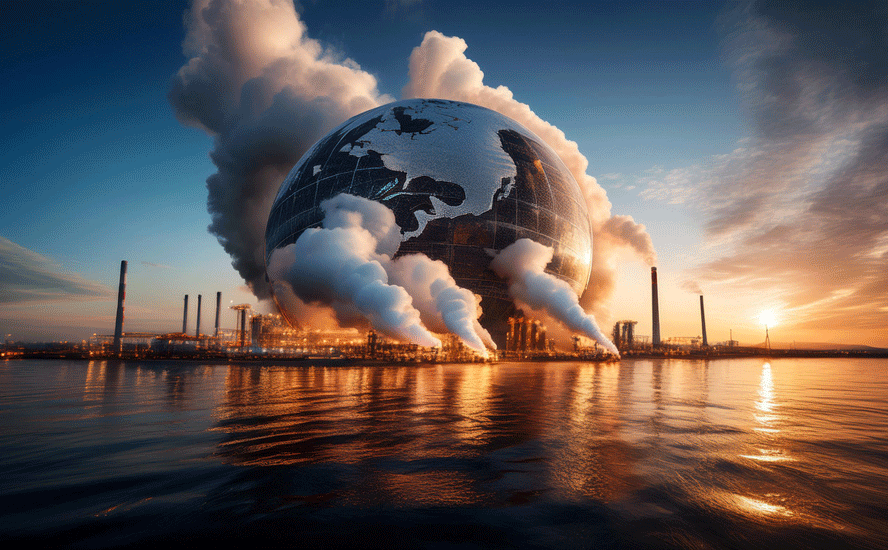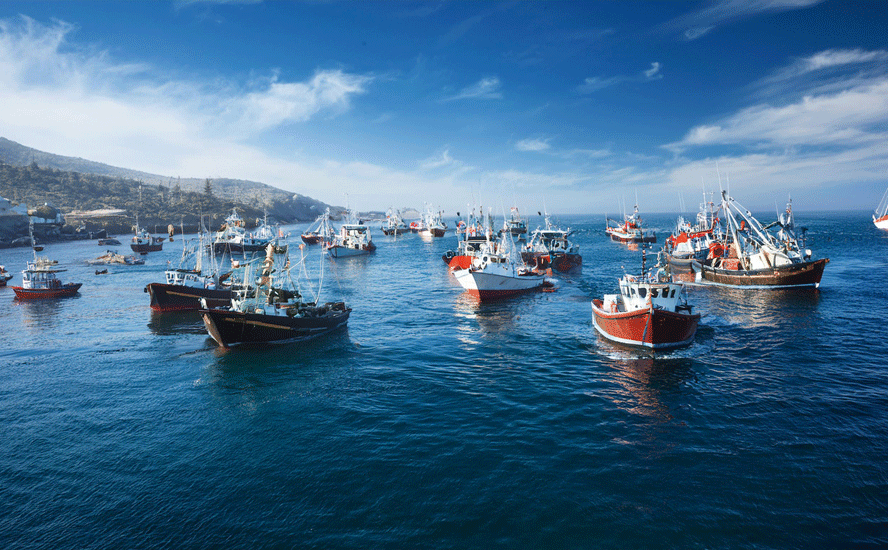Chemical pollution is slowly killing us
2021.11.26
Pollution is all around us yet much of it is invisible.
We see and smell air pollution in the billowing clouds of emissions rising from industrial smokestacks. We witness water pollution in the billions of pieces of discarded plastic strewn along beaches and floating in huge garbage patches in the open ocean. And we hear noise pollution from the countless sonic signatures of normal life, everything from traffic noise to overhead planes to emergency vehicle sirens and construction sites with their thudding and clanging of heavy machinery.


What we don’t see, smell or taste, is the pollution we put into our bodies from food, drink, tobacco, medicines and drugs; human-emitted chemicals found in clothing, bedding, furnishings, electronics, cars, pest control, paints, etc.; pollution as dissolved water particles that we drink or as airborne vapors/gases that we breathe; and pollutants attached to microplastics that we ingest through bottled water.
Pollution starts with wrecking the environment.
Human beings and most animals require oxygen, water and food. While simplistic, humans have tossed this fundamental condition of life into the trash-can. We pay little to no attention to the effects of polluting the very water, soil and food we need to survive and thrive.
If nothing is done to correct this problem which has become so extreme that our very civilization is in jeopardy, we as a species will drown in a putrid sea of our own waste, and we’ll have no-one but ourselves to blame. Why do we do it? Over-population is the obvious answer. Too many people to water and feed, especially in crowded countries like India and China, are stretching our finite resources to the brink.
The result is over-use of groundwater, too many pesticides done to increase crop yields, cutting down trees to make way for new crops, ruining the soil, and pesticide-laden runoff that is poisoning our rivers and lakes.
We need to stop taking our natural resources for granted. The Earth’s ability to supply us with its bounty is finite yet we continue to misuse, misallocate and poison what we have left.
According to a 2015 study, pollution was responsible for 9 million deaths worldwide, three times higher than mortality from AIDS, tuberculosis and malaria combined, and 15 times greater than from wars and other violence. Researchers referred to air pollution from sources like the burning of fossil fuels and biomass, and toxic-chemical pollution at work sites. How many has covid killed in two years? The monetary and infrastructure response has been massive, hundreds of billions spent, yet we do nothing to correct the biggest killer of all – pollution.
The study says pollution is underestimated even in developed countries like Canada, where heart disease can result from air pollution including second-hand smoke, and exposure to asbestos fibers can cause mesothelioma.
A recent academic paper called ‘Catastrophic pollution: A growing peril and potential catastrophic risk to humanity’, notes a big part of the problem is lack of knowledge, about the risks posed by the dispersal, mixture and recombination of chemicals in the wider environment:
Although some pollution control measure exist they are often not being adopted at the rate needed to avoid chronic and acute effects on human health now and in coming decades.
Poisoning the water and the earth
Water quality has always been of utmost importance to the health of human populations. Unsafe water sources and open sewers in the Middle Ages led to plagues that decimated villages and towns. Today chlorination is the most popular method of treating drinking water. However despite the advance of science, many freshwater supplies are getting fouled.
Since the 1990s, pollution has worsened in almost every river in Africa, Asia and Latin America. The situation is expected to deteriorate due to runoffs of fertilizer and other agrochemicals that lead to the growth of pathogens and algae blooms. About 80% of industrial and municipal wastewater is discharged without treatment, The Guardian states.

The use of fertilizers and pesticides in agriculture is a key source of freshwater contamination. Another is the oil and gas industry. Over the past several years there has been a dramatic rise in the use of hydraulic fracturing — the technology used to extract shale oil and gas.

Hydraulic fracturing flowback not only contains chemicals added during well stimulation, but the fluid that flows out of the well as the gas is produced contains a variety of toxic and carcinogenic substances.
For instance, bronopol is a biocide with low human toxicity that can release nitrite, which in alkaline medium reacts with secondary amines to produce the potent nitrosamine carcinogens. The recovered waste fluid — water contaminated with chemicals and anything that water has come in contact with, meaning heavy metals and minerals — is often left in open air pits to evaporate, releasing harmful volatile organic compounds (VOCs) into the atmosphere, creating contaminated air, acid rain and ground-level ozone.
Desertification is ridding ourselves of valuable, life-giving soil. Pesticides used for destroying insects or other organisms that are harmful to cultivated plants, may contain ammonia, benzene, chlorine, dioxins, ethylene oxide, formaldehyde and methanol. These substances become persistent soil contaminants that stay in the ground for decades and are passed from one organism to another.
Pollution is also compromising the world’s oceans, fisheries and coastal communities; about 3 billion people rely on fish for protein.
According to a study published earlier this year, pesticides, plastics (read more on plastic pollution below) and other toxic substances, alongside overfishing and climate change, are devastating fish and marine animals.
About 83% of the freshwater fish population is in decline — read about the expected collapse of this year’s BC salmon fishery due to the “atmospheric river” flooding event, and its impact on killer whales here)
“Many people think that fish declines are just the result of overfishing,” the National Observer quoted Matt Landos, co-author of the report, by the International Pollutants Elimination Network (IPEN).
“In fact, the entire aquatic food web has been seriously compromised with fewer fish at the top, losses of invertebrates in the sediments and water column, less healthy marine algae, coral and other habitats, (and) a proliferation of bacteria and toxic algae blooms. Chemical pollution (and) climate change … are the chief reason for these losses.”

Echoing the above-mentioned academic paper, the study notes between 100,000 and 350,000 chemicals are currently sold, yet only about 1% have been tested for their health and environmental impacts. Of particular concern to the aquatic environment are pesticides, pharmaceuticals and pollutants like phthalates and polyfluoroalkyls (PFAS). The latter is known to cause liver damage, thyroid disease, decreased fertility, high cholesterol, obesity, hormone suppression and cancer.
The chemicals poison aquatic animals’ immune, endocrine and other biological systems, and can also bioaccumulate throughout the food chain, poisoning top predators like seals, whales, even people, The National Observer explained.
Pollution combined with climate change and overfishing upsets the ecological balance of oceans, rivers and lakes, because warmer, more acidic waters pose health threats or habitat risks to vulnerable species, the publication quoted Landos, the IPEN report’s co-author:
“We see that it is kind of a conspiracy between climate change and overfishing (that can) exacerbate pollution in the environment,” he said. Those impacts can be particularly felt in the world’s pollution hot spots — places like the Arctic, the English Channel and the Salish Sea.
In the Pacific Northwest and the English Channel, years of pesticide use and industrial pollution have left persistent organic pollutants in oceanic and riparian sediments. Meanwhile, global atmospheric currents carry pollution from temperate and tropical latitudes to the poles, where colder temperatures make them fall from the clouds and contaminate remote polar ecosystems, he explained.
In a previous article we noted that warmer ocean temperatures cause acidification, which stunts the growth of corals and shell-based creatures like oysters. The destruction of coral reefs is a major problem resulting from climate change, since they provide critical habitat and food for so many species in the reef ecosystem. If current rates of temperature rise continue the ocean will become too warm for coral reefs by 2050.
An ocean dead zone is an area of the ocean that’s hypoxic, which means that it has low oxygen. The reasons for ocean dead zones are most commonly attributed to toxic chemicals and human waste (eutrophication – high levels of nutrients), infiltrating the water near coastlines. The low oxygen levels created favor jellyfish as they can thrive in oxygen depleted water whereas fish can’t.
Oceanographers first began noticing ocean dead zones in the 1970s, and instances of dead zones have been increasing ever since — a 10-fold global increase over the last 40 years. Large lakes can also have dead zones.
Climate change
At AOTH fully expect the planet to keep warming, until it begins to cool, as the Earth has done geologically for eons.
Increased greenhouse gases from the industrial era are only partly to blame. There is actually very strong science to indicate global temperature increases are down to climate cycles that don’t change for thousands of years. It’s a valid argument to say that anthropogenic emissions have sped up what was already happening naturally.
Milankovitch’s Theory states that as the Earth travels through space around the sun, cyclical variations of three elements combine to produce variations in the amount of solar energy that reaches us. These orbital processes are thought to be the most significant drivers of ice ages and, when combined, are known as Milankovitch Cycles.
Climate is also affected by changes occurring within the sun, thus shifting the intensity of sunlight that reaches the Earth’s surface. These changes in intensity can cause either warming – stronger solar intensity – or cooling when solar intensity is weaker.
Whatever the causes of climate change, its effects are obvious, and getting worse.
The recent flooding of the Sumas plain where Abbotsford and Chilliwack, BC are located, is a good example of how climate change is exacerbating pollution. We basically took a century-old flood mitigation system, stress-tested it and it failed. Warnings of a catastrophic failure due to a record-breaking rainfall in the region have been sounded for years. Politicians always have grandiose ideas about how to spend money on new infrastructure, yet seem to forget they also need to maintain and upgrade existing systems like dykes and levees.
The long-term effects of the flooding could even be worse than the inundation, when all of the impacts from pollution are counted. For example, how many millions of gallons of fertilizers and chemicals were dumped on Fraser Valley crops that are now water-borne and traveling who knows where? Fraser River fishing guides are volunteering their time (and money, equipment) to try and fish out hazardous waste containers and propane tanks that are another environmental time bomb waiting to explode.
Quora notes that most hazardous pesticides can easily make their way into groundwater and streams, or get absorbed into animals and fish. Rainfall accelerates the movement of pesticides into watercourses and ecosystems.
According to safewater.org, the effects of pesticides on the human body depend on the pesticide, with some affecting the nervous system and others irritating the skin and eyes. They can also be carcinogens that cause cancer, and affect the hormone or endocrine system.
Pollution and the human body
Indeed we are only as healthy as the air we breathe the food we eat and the water we drink. Unfortunately there is increasing evidence we cannot take these things for granted.
Air
According to the World Health Organization, nine out of 10 people are breathing dangerously polluted air, with this type of pollution killing an estimated 7 million annually, more than the 5.1 million who have died so far from the coronavirus.
Citizens living in the developing world are most at risk, considering these places continue to rely on coal-fired power plants for electricity. Also, in India for example, public transport is underfunded, so heavily emitting, cheap cars are the main mode of transport. Indoor air pollution is also more common in poorer nations, where houses are often built cheaply with low-quality materials. According to Global Citizen, poorly ventilated, damp homes are the norm for the approximately 1 billion people who currently live in urban slums.
The publication also notes, however, that Europe and North America haven’t escaped the problem. Historical wildfires in Canada and the US over the past several summers led to a dramatic decrease in air quality across the continent, while in Eastern Europe, eight cities in the Balkans are among the top 10% of the world’s most polluted urban areas.
Deaths from polluted air mainly result from heart disease, strokes, chronic obstructive pulmonary disease (COPD), lung cancer and acute respiratory infections.

Among the main toxic airborne substances affecting health are nitrogen oxides, sulfur oxides, ozone and particulate matter, found for example in wildfire smoke. The WHO estimates that 4.5 million deaths globally can be attributed to these tiny particles alone, which penetrate deeply into the lungs.
Like ground-based pollution and water pollution, air pollution is made worse by climate change, because many of the same emissions responsible, such as CO2 and methane, also warm the planet through the “greenhouse effect”.
A lesser-known but interesting impact of air pollution is its relationship to mental health. In 2011 a researcher at the London School of Economics conducted a study looking at whether air pollution had an effect on cognitive performance.
His experiment measuring how pollution effected students taking exams came out with a startling result: the most polluted days correlated with the worst test scores.
Five years later another study backed up the researcher’s findings that pollution can result in lower productivity. Crime can also be associated with poor air quality, with more petty crimes in both poor and rich areas happening on the most polluted days.
A third study, this time by MIT in 2018, also showed a possible link. Examining nine years of data and covering almost the entire United States in over 9,000 cites, the research quoted by the BBC found that “air pollution predicted six major categories of crime”, including manslaughter, rape, robbery, stealing cars theft and assault. The cities highest in pollution also had the highest crime rates.
Even the thought of air pollution, and its negative associations, has been found to cause an increase in anxiety, and prompt people to become more aggressive and engage in irresponsible behaviours. Various pollutants have also been linked to inflammation in the brain and can damage brain structure and neural corrections, according to the BBC.
Water
Some might presume that because our oceans are so vast, poisonous chemicals are diluted and lose their toxicity. In fact the opposite occurs through a process called biomagnification. Biomagnification means that toxic substances originally released in low quantities are concentrated up the marine food chain until they arrive at human consumers in poisonous doses.
People can also ingest pollutants through groundwater, with the source of the contamination often being far from where the water is consumed. Sources of groundwater contamination include leaky landfills, hazardous waste disposal sites, illicit industrial discharges and dumping, fracking, fire-fighting chemicals, drycleaning and mechanical solvents, medications that get into the water supply, and pesticides. An estimated 2 billion people drink contaminated water on a daily basis.
Chemicals
‘Chemicals are slowing killing us,’ screams a recent headline in Clean Technica, referencing a new book telling us how and why we need to get rid of toxins.
“Ours is a poisoned world, its system infused with the substances we deliberately or inadvertently produce in the course of extracting, making, using, burning, or discarding the many marvelous produces on which modern life depends,” writes author Julian Cribb, in ‘Earth Detox: How and Why We Must Clean Up Our Planet’.
The scariest part of the billions of tons of chemicals that we emit and circulate through our normal daily and industrial activities is the fact that they never go away.
Among the ways that Cribb describes human-caused pollution flowing around the Earth, are: dissolved or as particles in water; as airborne vapors, gases microscopic chemical particles or attached to dust; in the bodies of living animals and in plants; via the food chain through the first three routes and by the use of pesticides, packaging chemicals, food preservatives, dyes and additives in food production; in manufactured goods; and finally in humans, passed from pregnant mother to embryo, from parent to offspring and in the drugs we take.
In 2019 a reporter for the British newspaper The Guardian sought to find out how much her body was exposed to toxic chemicals just through everyday living.
Emily Holden spent six months in Washington, DC going about her daily life including about a week when she wore a wristband designed to measure dangerous chemicals in her environment. She was later subjected to a battery of tests including X-Rays examining her bones and a urine sample.
The results were typical for an average person living in a city, although some of the toxins she presented with were surprising. Her wristband was analyzed for over 1,500 chemicals, of which 12 were detected. The other 1,518 were below the detection limit.
Most were fragrances used in bodycare products and cleaning supplies. Several were phthalates, a group of chemicals used in food packaging, shampoos and cosmetics. According to The Guardian report, phthalates can mimic hormones, affect the endocrine system and harm a developing fetus…
They are associated with obesity and reproductive problems, particularly for males.
A recent study quoted by The Hill states that phthalates may contribute to about 100,000 premature deaths each year among Americans aged 55 to 64.
The wristband test also highlighted TPP, a flame retardant used in nail polish.
Holden’s other tests revealed there were at least 36 chemicals in her body including phthalates, flame retardants and pesticides, along with phenols used in plastics and polycyclic aromatic hydrocarbons from air pollution. Holden’s exposure to second-hand cigarette smoke two weeks prior to the test returned cotinine, a metabolite.
Plastics
For years it has been known that plastic breaks down into tiny particles that are consumed by shellfish, fish and mammals higher up the food chain, presenting a danger to human health if consumed.
It is estimated there are over 150 million tonnes of plastic in the ocean. Around 8 million tonnes enter the seas every year — the equivalent of dumping a truckload of plastic garbage every minute.
National Geographic says the problem of discarded plastic is so severe, that if nothing is done, by 2050 the oceans will contain more plastic than fish, ton for ton.
It has become a much-discussed topic, and the subject of several documentaries, revolving around the harmful effects of minute plastic fragments, called microplastics and nanoplastics (more on that below), on plants, fish, sea birds, mammals, and eventually, humans at the top of the food chain.
The problem stems from the fact that plastic is virtually indestructible. A trait that was once sold to consumers as a virtue, has become a vice, due to the ubiquity of plastic especially in the marine environment.
Most plastic has a very long lifespan. Plastic bags, for example, can take up to 20 years to decompose, while takeaway coffee cups, despite being mostly paper, have a plastic lining that will endure for 30 years.
Other items, including coffee pods, disposable diapers, and plastic toothbrushes, will be in landfills for five centuries!
Plastic that enters the ocean gets exposed to UV radiation, oxygen, high temperatures and microbial activity. Some plastics, those made from bacterial polymers, are naturally biodegradable. Others, such as take-away food containers, will only decompose when exposed to prolonged temperatures above 50 degrees C, conditions found in an industrial composter that cannot be replicated in the oceans.
Eventually the salt water, sun, wind and waves break the plastics down to tiny particles that are carried by ocean currents to even the most remote corners of the Earth.
Some marine animals get entangled in plastic fishing nets or are impaled by plastic straws. Others mistake the colorful plastic fragments for food and eat them. However since they cannot be digested, the pieces create a feeling of artificial satiation in the animals that can lead to starvation.
One of the surprising facts about microplastics is how entrenched they are in the global ecosystem. They have been detected in lakes and seas, in the sediments of rivers and deltas, and in the stomachs of the smallest and largest organisms, from zooplankton to whales. One study found that every square kilometer of the world’s oceans has 63,320 plastic particles floating on the surface.
There are a number of ways that plastics get into the environment. Microbeads used as exfoliants in beauty products escape water filtration systems. Other primary sources include plastic powders in molding, and plastic nanoparticles in a variety of industrial processes.
The extensive and indiscriminate use of food packaging, car tires, paints, personal care products (eg. toothpaste) and electronic equipment, are some more contributors to microplastic contamination.

Public awareness campaigns have mostly stopped the use of microbeads, but similar particles continue to be introduced into water systems.
One of the more surprising sources of microplastic pollution is fibers from synthetic fabrics. Plastic fibers from clothing, including polyester, acrylic and polyamides, are shed from garments when they are agitated in washing machines, then drained with the effluent water. Experiments showed up to 1,900 microplastic fibers are released from just one synthetic garment in one wash.
Another less obvious source is the plastic debris from the mechanical abrasion of car tires on pavement. These tiny shards are carried by rain, snow melt and street cleaning into natural stormwater catch basins and municipal drainage systems.
Microplastics can also become part of the water cycle and delivered back to Earth as rain or snow.
Scientists think that tiny particles shed by anything plastic get incorporated into water droplets when it rains, then wash into lakes, rivers and oceans. When the water evaporates, the particles can end up in groundwater. They are then consumed by animals and people via drinking water and food, or breathed in. Microplastics can also attach to heavy metals or hazardous chemicals such as mercury, and adhere to particles from furniture and carpets containing toxic flame retardants, according to a microplastics researcher quoted by The Guardian.
The presence of microplastics in the marine food chain is well documented. As Food Safety explains,
Zooplankton, the microscopic sea organisms at the bottom of the food chain, is eaten by all kinds of fish. Fish ingest small pieces of plastic due to their continuous uptake of water. Microplastics get into the next level of the food chain when other animals eat fish contaminated with microplastics. Eventually, microplastics move all the way up to the top of the food chain.

There is even a scientific term for this process of animals that have eaten microplastics being eaten by other animals: trophic transfer.
A common way for nanoplastics to move up the food chain, is to be first consumed by algae, that is eaten by water fleas, which in turn become fish food.
The problem is not only the nano/microplastics, but the pollutants they carry with them. When plastics move through the food chain, the attached toxins also move, and accumulate in animal fat and tissue through a process called bio-accumulation. Chemicals added to the plastic during the production process can leach from the plastic into the body of the animal that has eaten them. Read more here
Potential adverse effects, at high enough concentrations, may include immunotoxicological responses, reproductive disruption, anomalous embryonic development, endocrine disruption, and altered gene expression.
A laboratory study found fish that were fed nanoplastics, versus those that weren’t, showed abnormal behavior, such as slower eating and hyperactivity.
Among the marine and freshwater species known to ingest water contaminated with microplastics, are fish, bivalves and crustaceans. An animal can also be exposed to microplastics through its skin, or in the case of fish farms, eat plastic-contaminated fish meal.
According to the UN’s Food and Agriculture Organization, of 25 fish species of commercial significance, including Atlantic cod, 11 were found to contain microplastics.
When microplastics were fed to mice, they accumulated in the liver, kidneys and intestines, stressing these organs. Plastics also increased the level of a molecule that may be toxic to the brain, says Healthline.
While microplastics’ effects on human health have not been widely studied, it’s safe to say that inhaling or ingesting them should be avoided. This may be extremely difficult however; one study found plastic fibers in 87% of the human lungs studied.
According to Statista, every week people consume an amount of plastic the size of a credit card.
In a limited study, Canadian researchers estimated the average person ingests over 74,000 plastic particles a year. Examining just a few food categories including fish, shellfish, sugar, alcohol, honey, bottled versus tap water, plus air, the study authors found the most microplastics in air, bottled water and seafood.
Especially worrying are “nanoplastics” — pieces that are so tiny, they are able to penetrate human cell walls.
Chemicals associated with plastics are known to be harmful. The most well-studied is BPA — found in plastic packaging or food storage containers. When BPA leaks into food it can interfere with reproductive hormones in women.
Conclusion
Climate change has been happening naturally for millions of years and while we at AOTH do not believe that man-made problems are the only cause of global warming, we do think that humanity has been very detrimental to our environment, degrading the land, air and sea in nearly equal proportions.
Is anyone out there?
Does anybody listen or care anymore?
We are living on a dying planet,
We’re killing everything that’s alive,
And anyone who tries to deny it
Wears a tie
And gets paid to lie
Joe Walsh, Songs for a Dying Planet
We also firmly believe that electrification and decarbonization is necessary, and while it will not stop global warming — the Earth is going to keep warming until it doesn’t, then it will begin to cool as it has done for eons — it will help to reduce the amount of noxious chemicals in the air, water and on land, many related to fossil fuels and petrochemicals.
Plastic pollution is an especially awful scourge that we need to put our heads together to solve. Groups such as The Ocean Cleanup, which is testing an experimental garbage collection system and has brought back over 28,000 kilograms from the Great Pacific Garbage Patch, should be acknowledged and technologies like it pursued and funded.
As this article has shown, pollution has a number of causes and negative effects, not only on plant, animal and aquatic life, but humans. We are literally becoming the plastic we are eating and as The Guardian experiment showed, just going about our daily activities we are accumulating chemicals in amounts that could be dangerous to our health.
So what’s the answer? In my opinion we need to start cleaning up these chemicals, find a better method of disposal, and start looking at alternatives. For example eco-friendly strips that are being sold as substitutes to laundry detergents, which contain a number of harmful substances to the aquatic environment, might be a step in the right direction.
And rather than trying to prevent global warming, which imo is too late, it’s going to happen no matter what changes are made at this point, we should be doing more to mitigate the effects and to “harden targets” that are clearly in the way.
For example we can shop locally to avoid high consumption of fossil fuels used to transport food, and buy organic fruits and vegetables that do not involve the use of pesticides.
Instead of building new public infrastructure, spend the money first on maintaining and improving existing facilities, especially bridges over rivers that can easily be washed out during excessive rain events, which are happening more regularly; shoring up dykes and levees; and relocating buildings and homes that are close to coastlines vulnerable to sea rise.
Remember we are only as healthy as what we eat, breathe and drink. Poisoning our air, water and land will definitely come back to haunt us in ways we don’t want to imagine.
Richard (Rick) Mills
aheadoftheherd.com
subscribe to my free newsletter
Legal Notice / Disclaimer
Ahead of the Herd newsletter, aheadoftheherd.com, hereafter known as AOTH.
Please read the entire Disclaimer carefully before you use this website or read the newsletter. If you do not agree to all the AOTH/Richard Mills Disclaimer, do not access/read this website/newsletter/article, or any of its pages. By reading/using this AOTH/Richard Mills website/newsletter/article, and whether you actually read this Disclaimer, you are deemed to have accepted it.
Any AOTH/Richard Mills document is not, and should not be, construed as an offer to sell or the solicitation of an offer to purchase or subscribe for any investment.
AOTH/Richard Mills has based this document on information obtained from sources he believes to be reliable, but which has not been independently verified.
AOTH/Richard Mills makes no guarantee, representation or warranty and accepts no responsibility or liability as to its accuracy or completeness.
Expressions of opinion are those of AOTH/Richard Mills only and are subject to change without notice.
AOTH/Richard Mills assumes no warranty, liability or guarantee for the current relevance, correctness or completeness of any information provided within this Report and will not be held liable for the consequence of reliance upon any opinion or statement contained herein or any omission.
Furthermore, AOTH/Richard Mills assumes no liability for any direct or indirect loss or damage for lost profit, which you may incur as a result of the use and existence of the information provided within this AOTH/Richard Mills Report.
You agree that by reading AOTH/Richard Mills articles, you are acting at your OWN RISK. In no event should AOTH/Richard Mills liable for any direct or indirect trading losses caused by any information contained in AOTH/Richard Mills articles. Information in AOTH/Richard Mills articles is not an offer to sell or a solicitation of an offer to buy any security. AOTH/Richard Mills is not suggesting the transacting of any financial instruments.
Our publications are not a recommendation to buy or sell a security – no information posted on this site is to be considered investment advice or a recommendation to do anything involving finance or money aside from performing your own due diligence and consulting with your personal registered broker/financial advisor.
AOTH/Richard Mills recommends that before investing in any securities, you consult with a professional financial planner or advisor, and that you should conduct a complete and independent investigation before investing in any security after prudent consideration of all pertinent risks. Ahead of the Herd is not a registered broker, dealer, analyst, or advisor. We hold no investment licenses and may not sell, offer to sell, or offer to buy any security.
Legal Notice / Disclaimer
Ahead of the Herd newsletter, aheadoftheherd.com, hereafter known as AOTH.Please read the entire Disclaimer carefully before you use this website or read the newsletter. If you do not agree to all the AOTH/Richard Mills Disclaimer, do not access/read this website/newsletter/article, or any of its pages. By reading/using this AOTH/Richard Mills website/newsletter/article, and whether you actually read this Disclaimer, you are deemed to have accepted it.


